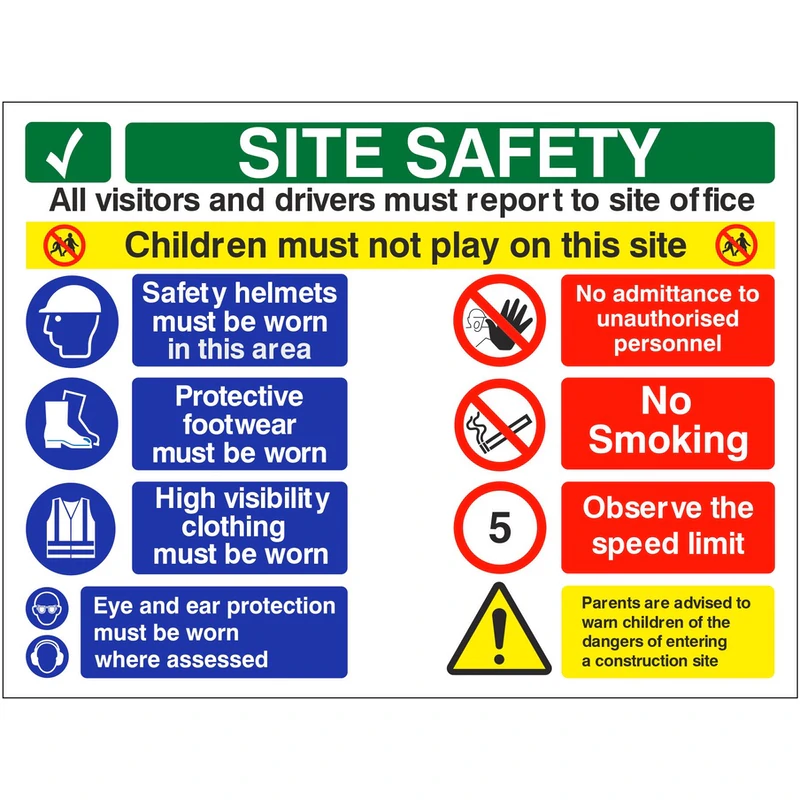Picking the Right Safety Signage: Trick Aspects for Workplace Safety Success
Picking the Right Safety Signage: Trick Aspects for Workplace Safety Success
Blog Article
Types of Safety And Security Signs You Required to Know for Ultimate Security

Indication
Indication play an important function in making certain safety by communicating important information regarding potential risks. These indicators are important in different settings, consisting of workplaces, public areas, and roads, where they inform people to risks that may not be promptly noticeable. Common examples of indication consist of those showing unsafe surface areas, electric threats, and reduced overhead clearance.

It is vital for companies to consistently assess the positioning and visibility of caution indicators to guarantee they successfully interact dangers. Training employees and the public on the definitions of these indicators additionally strengthens their significance in advertising safety and security society - Safety Signs.
Prohibition Indicators
Restriction indications function as crucial signs created to interact limitations and actions that must be avoided in specific locations. These signs are vital for making sure security and conformity, aiding to avoid accidents and reduce dangers in different environments, consisting of workplaces, public locations, and building sites. Usually defined by a vibrant red circle with a diagonal line, restriction signs convey a clear message that particular actions are not allowed.
Usual instances include signs that prohibit smoking cigarettes, consuming, or entry right into limited areas. The efficiency of these indicators depends upon their exposure and simplicity, making it easy for individuals to recognize the desired message at a look. Appropriate placement is crucial; they ought to be situated in high-traffic areas and near the points of possible violation to make best use of awareness.
Restriction indicators not only shield individuals however additionally maintain organizational policies and lawful demands (Safety Signage). Their usage fosters a culture of safety and security and regard for regulations, adding to a more secure atmosphere for every person. Consequently, understanding and sticking to the instructions of restriction signs is crucial to ensure conformity and promote overall safety in any kind of given space.
Obligatory Signs
Compulsory indicators are essential parts of safety communication, made to educate people of actions that have to be taken to make sure safety and compliance in different settings. These indicators are identified by their distinct blue history and white symbols or message, conveying clear directions that have to be adhered to.
Usual examples of necessary signs include regulations such as "Use Personal Protective Devices" (PPE), "Use Hearing Protection," and "Need To Clean Hands." Each of these signs offers a particular purpose, targeting behaviors that enhance safety and minimize dangers in workplaces, public centers, and building sites.
The value of compulsory signs can not be overemphasized; they not website link only assist in avoiding injuries and accidents but additionally make certain adherence to lawful policies and organizational plans. In atmospheres where risks are common, the visibility of these indications enhances a culture of safety and security and responsibility amongst all individuals.
To optimize their performance, required indications ought to be placed in noticeable places, guaranteeing they are easily seen and comprehended by every person in the area - Safety Signage. Frequently evaluating and maintaining these indications is also critical to ensure their quality and exposure, thus advertising a much safer atmosphere for all
Emergency Situation Information Indications
Emergency situation information signs play an essential role in directing people throughout situations, providing vital details that can aid ensure safety and assist in reliable reaction activities. These signs are designed to deliver immediate and clear guidelines in emergency situation scenarios, such as fires, chemical spills, or all-natural disasters.
Generally, emergency info indications consist of vital details such as discharge courses, emergency situation call numbers, places of emergency treatment stations, and guidelines for making use of emergency equipment, such as fire extinguishers or defibrillators. Their style commonly includes strong colors, high contrast, and generally well-known signs to guarantee exposure and understanding also in high-stress circumstances.
It is crucial for organizations to frequently review and upgrade their emergency details indications to show any type of modifications in structure layouts, emergency situation treatments, or call information. Appropriate placement of these signs is just as crucial; they should be positioned in locations with high foot website traffic and at eye degree to make sure that they are conveniently noticeable during emergency situations.
Standard and Directional Indications
Standard and directional signs are vital devices for navigation within various environments, making sure that people can find their means efficiently and safely. These signs serve a critical feature in both public and private areas, including work environments, healthcare facilities, schools, and entertainment areas.
Typically including arrows, signs, or text, guideline and directional signs provide clear directions on browsing complex formats. They assist avoid confusion and minimize the threat of mishaps by directing people towards departures, restrooms, and details sights. Effective signage is created to be easily well-known, frequently using standard colors and shapes to communicate info swiftly.
In enhancement to aiding navigating, these indications play a vital role in emergency readiness. Throughout crises, well-placed directional indications can lead people to safety, lowering panic and guaranteeing orderly evacuations. Regular upkeep and updates to these signs are critical, as changing layouts or new dangers may demand revised guidance.
Conclusion

Comprehending the distinctions in between caution signs, prohibition indicators, compulsory signs, and emergency situation details signs can substantially boost total safety and security awareness.Warning signs play a crucial function in guaranteeing security pop over to this site by communicating vital info about prospective risks. These indications are crucial for guaranteeing safety and security and compliance, assisting to avoid mishaps and reduce click risks in various settings, consisting of workplaces, public areas, and building sites. Throughout dilemmas, well-placed directional indications can lead people to security, minimizing panic and ensuring organized discharges. Warning indications, prohibition signs, required indications, and emergency situation details and directional indicators each serve distinct purposes in sharing essential information relating to risks, restrictions, security activities, and navigational guidance.
Report this page